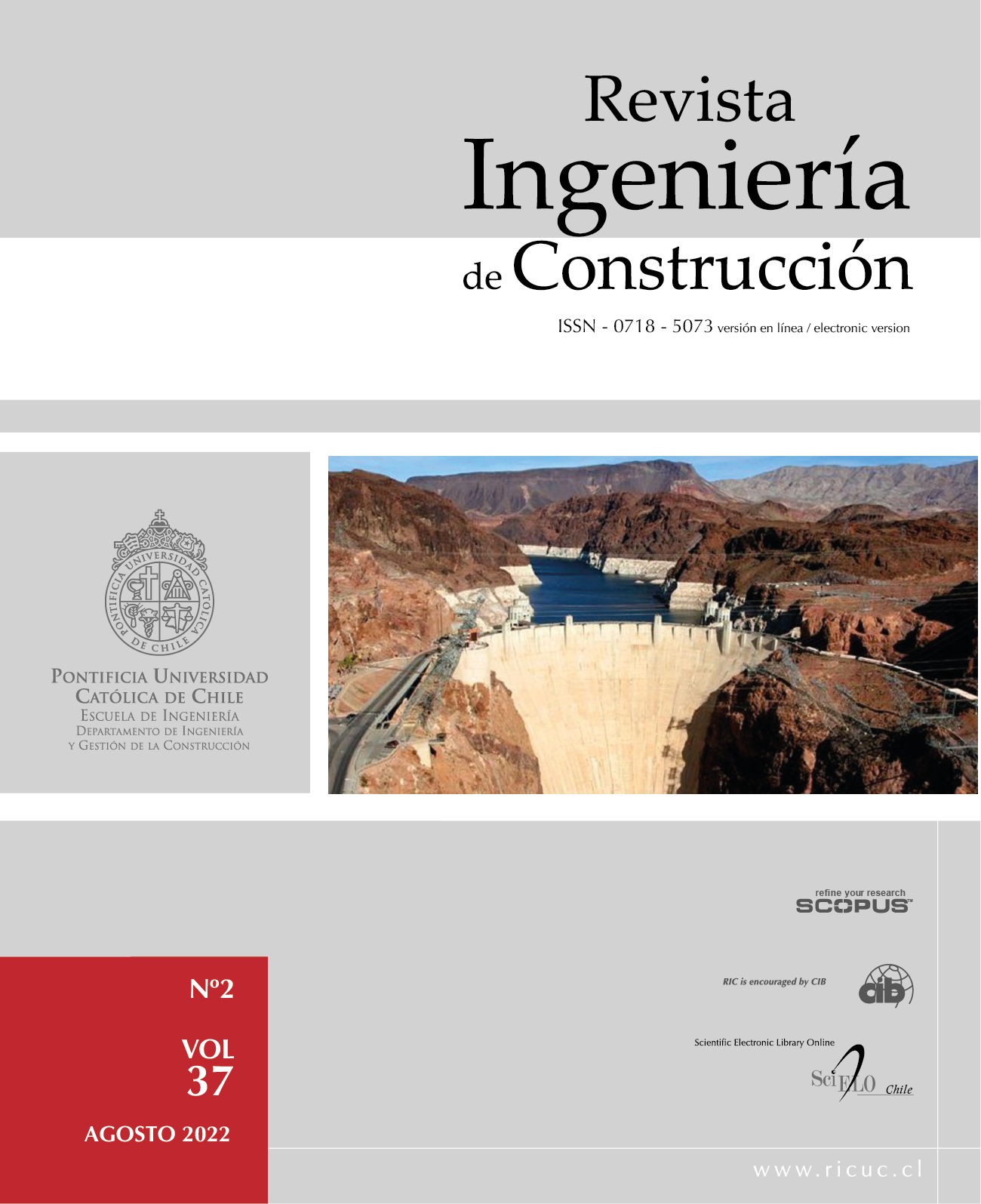Seismic design for performance in non-structural elements using the direct displacement methodology in reinforced concrete buildings
DOI:
https://doi.org/10.7764/RIC.00027.21Keywords:
Performance design, direct displacement, force-based design, non-structural elements, reinforced concrete buildingsAbstract
One of the under-investigated branches of performance design approaches is the design of non-structural elements. Non-structural elements are all those that do not participate directly in the structural resistance of a building, however, they present damage in the event of an earthquake. One of the methods developed in recent years is through direct displacement, which consists of restricting the non-structural element by giving it a maximum allowable displacement and calculating the allowable force by Hooke's law. Therefore, the nonstructural elements for different configurations of a reinforced concrete building were designed using the direct displacement methodology and compared with the design according to the force-based design. Five reinforced concrete buildings (structural wall system) with the same floor were modeled for five different seismic movements and the design was carried out by the two methods for a certain anchoring system. In conclusion, the design based on direct displacement is more efficient than the traditional design, since it considers inelastic parameters. In addition, any non-structural element must be designed by both methods and apply the envelope criteria so as not to violate local regulations.Downloads
Download data is not yet available.
Downloads
Published
2022-08-30
How to Cite
Collantes, G. . (2022). Seismic design for performance in non-structural elements using the direct displacement methodology in reinforced concrete buildings. Revista Ingeniería De Construcción, 37(2), 213–227. https://doi.org/10.7764/RIC.00027.21
Issue
Section
Articles


